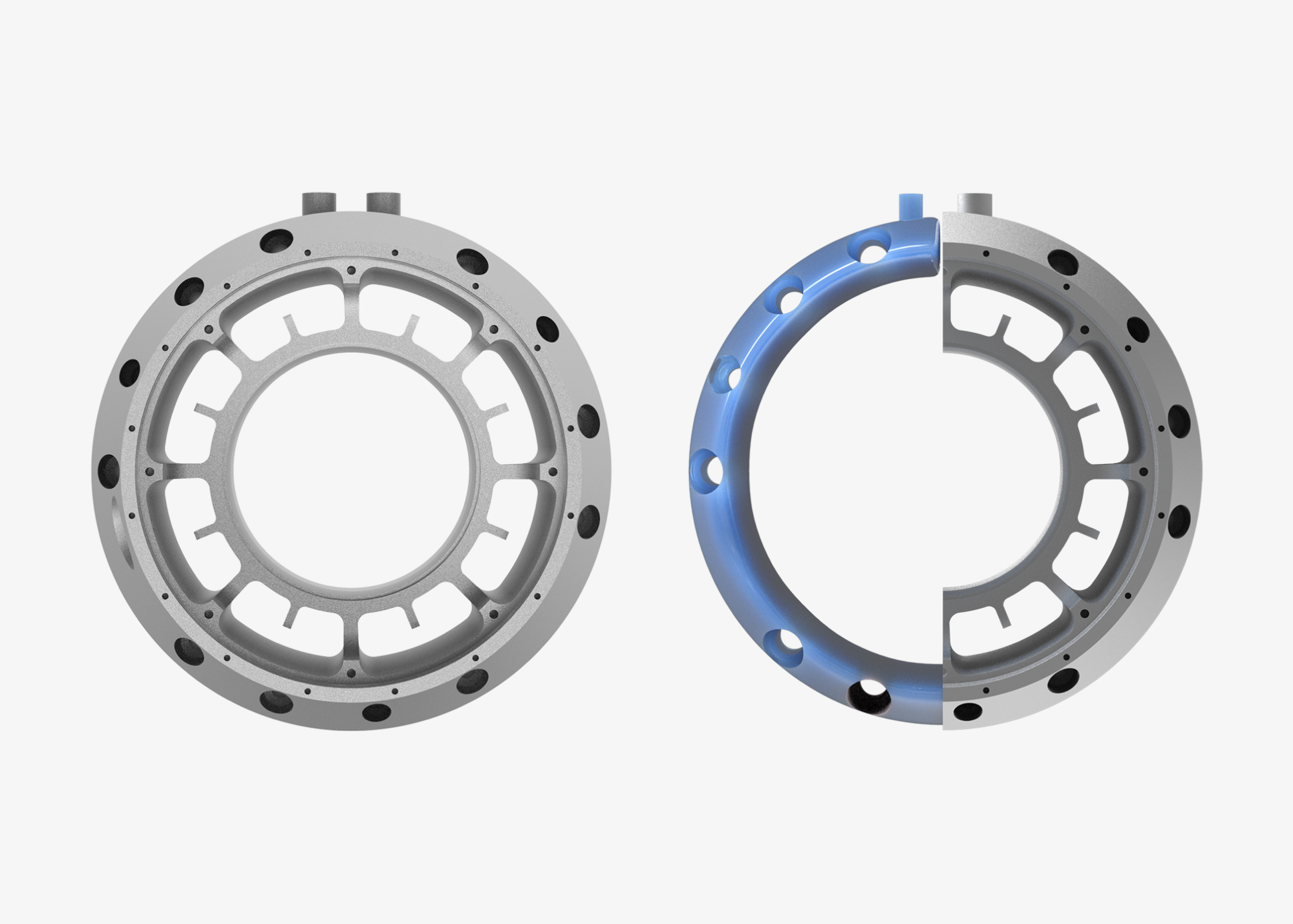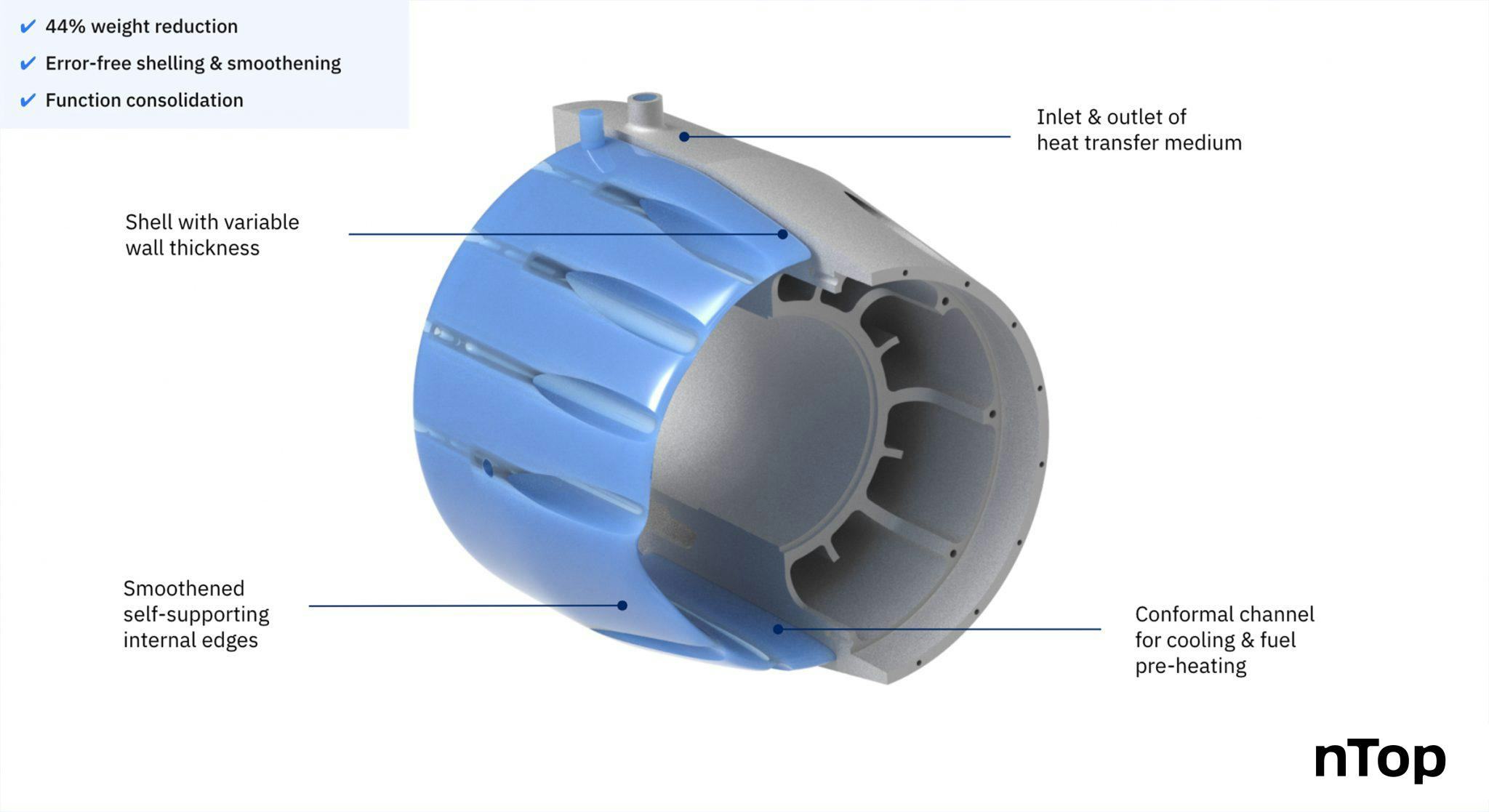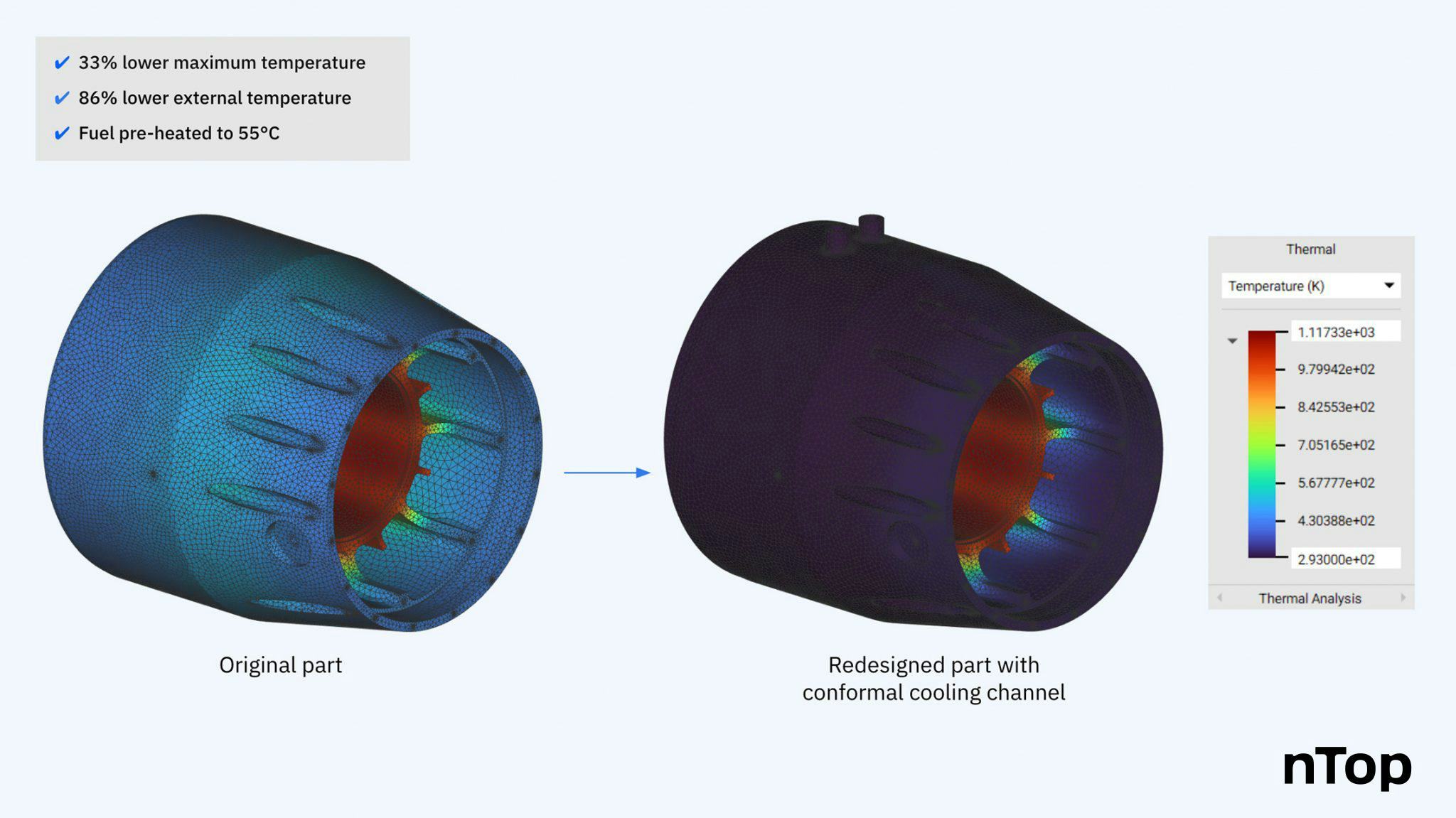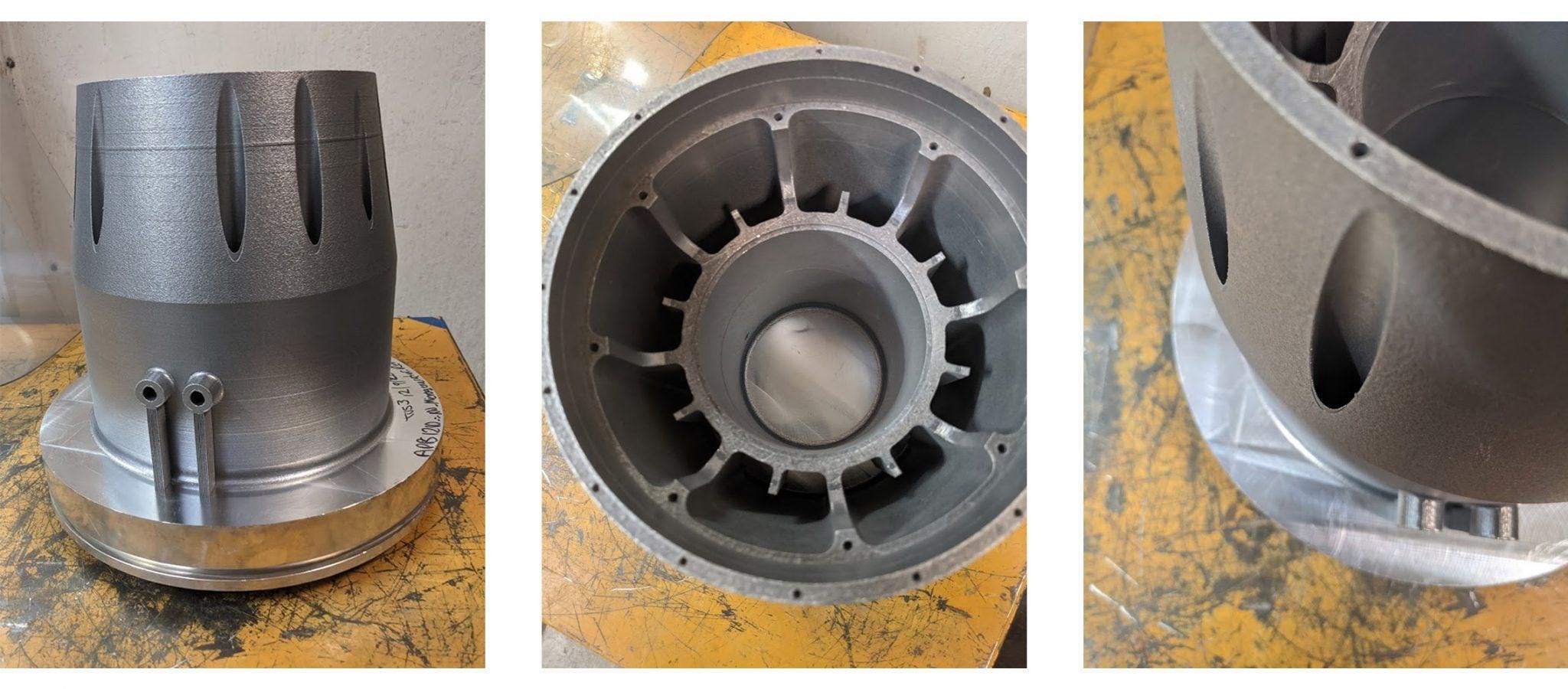Design high-efficiency heat exchangers
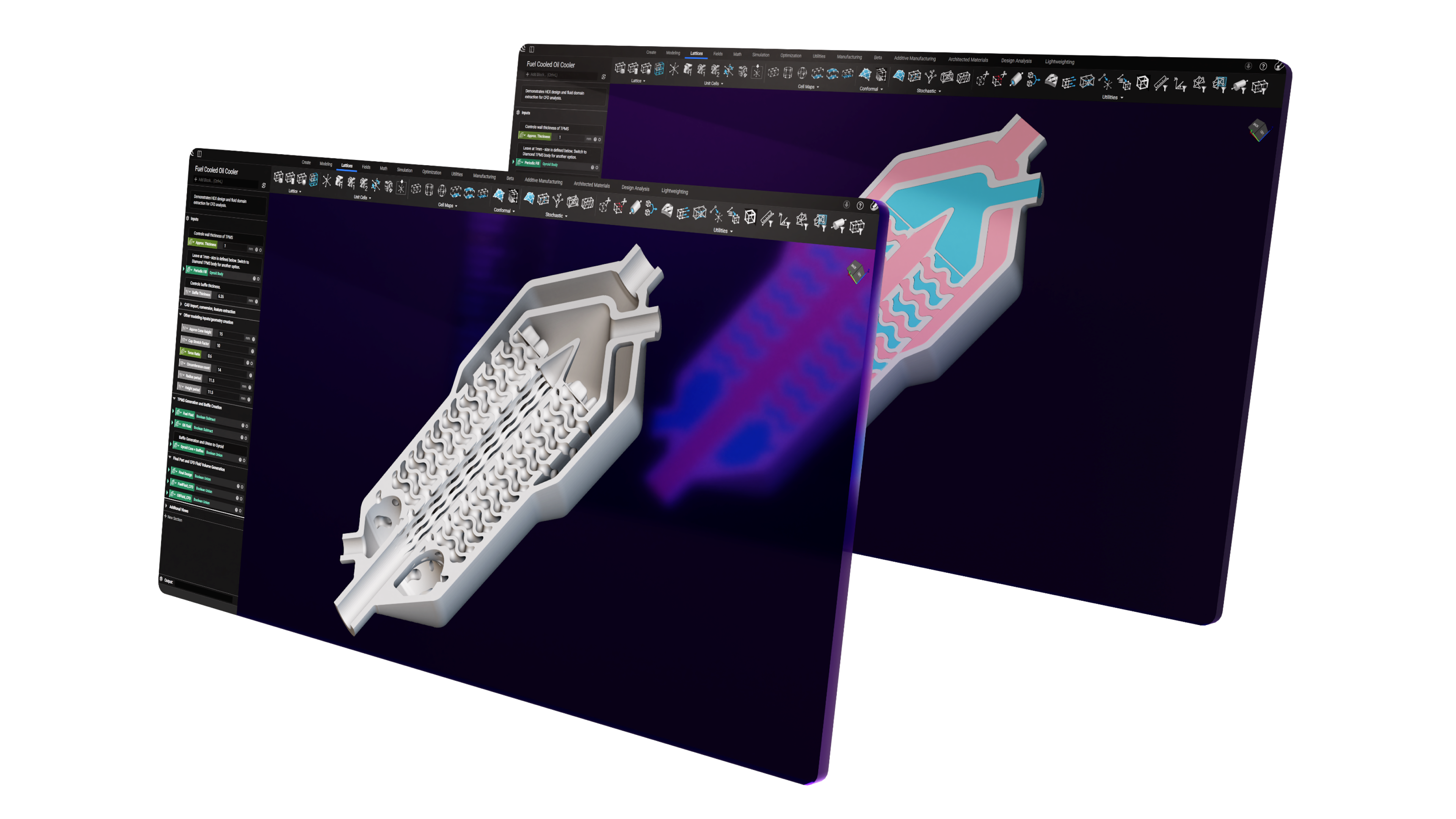

Why choose nTop for thermal management?
nTop helps leading companies across industries capitalize on the latest advancements in high-performance heat exchanger design and manufacturing to realize better thermal efficiency outcomes.
nTop’s critical tools for thermal management with additive manufacturing
nTop features four powerful tools to help you design higher-performing parts that manage heat efficiently, all within your existing workflows.
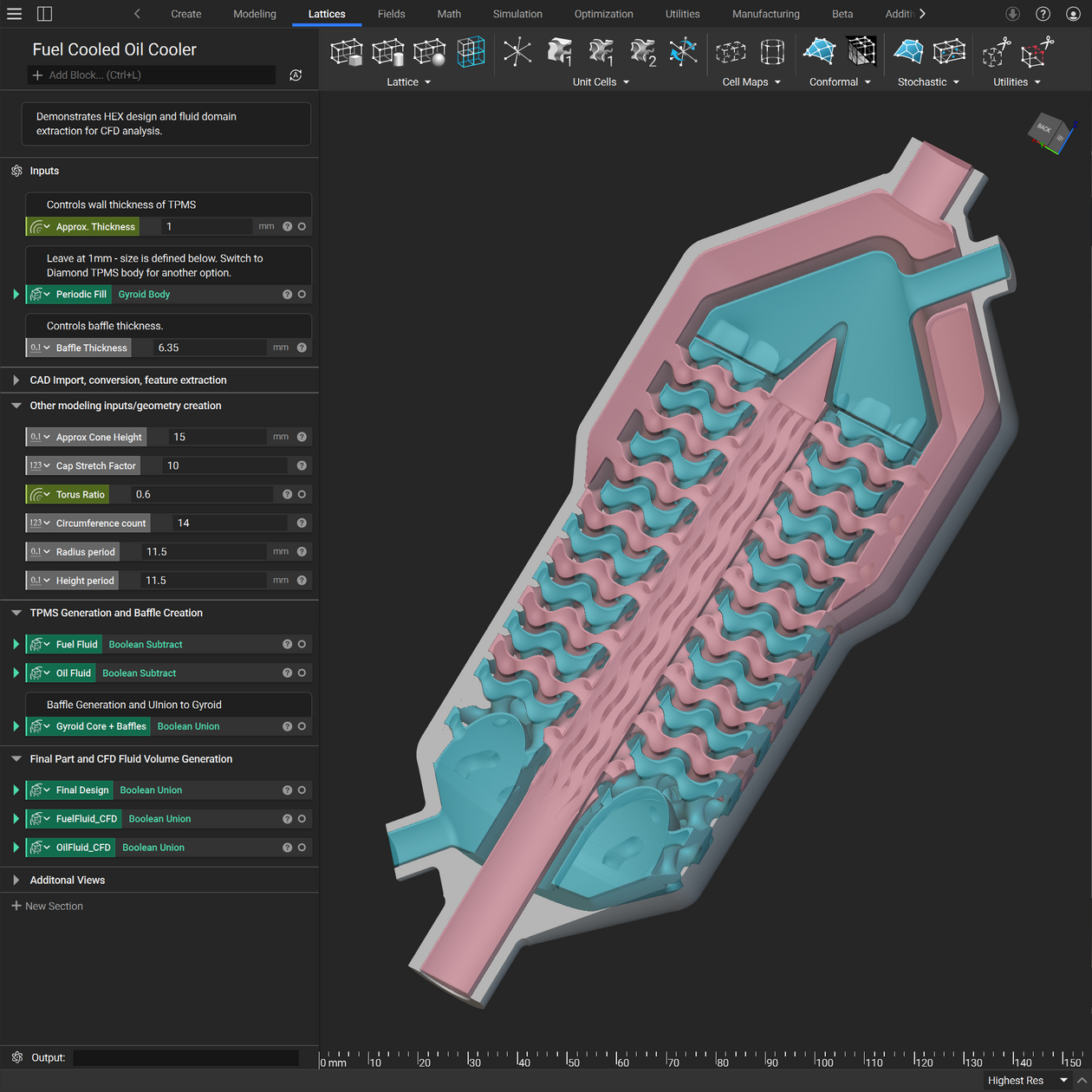
Robust lattice design
Triply Periodic Minimal Surface (TPMS) lattices have a large surface-to-volume ratio, making them ideal for heat exchangers. Look for the ability to generate and modify complex, scalable lattice structures with variable thickness and smooth transitions quickly.
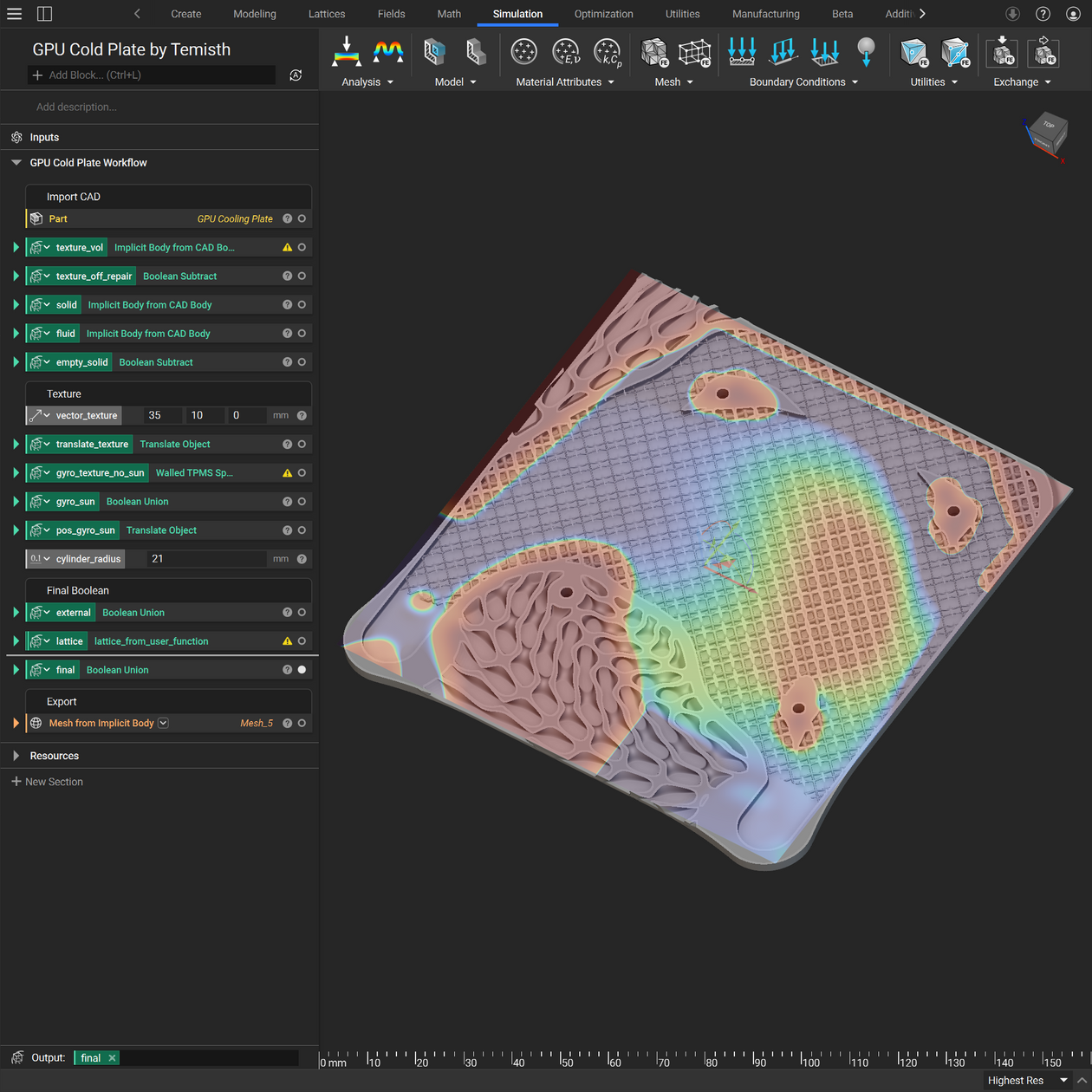
Simulation-driven design
Rather than interpret results manually, look for capabilities to use CFD thermal maps and flow fields to directly control critical lattice parameters and the location, density, and orientation of flow or thermal guides.
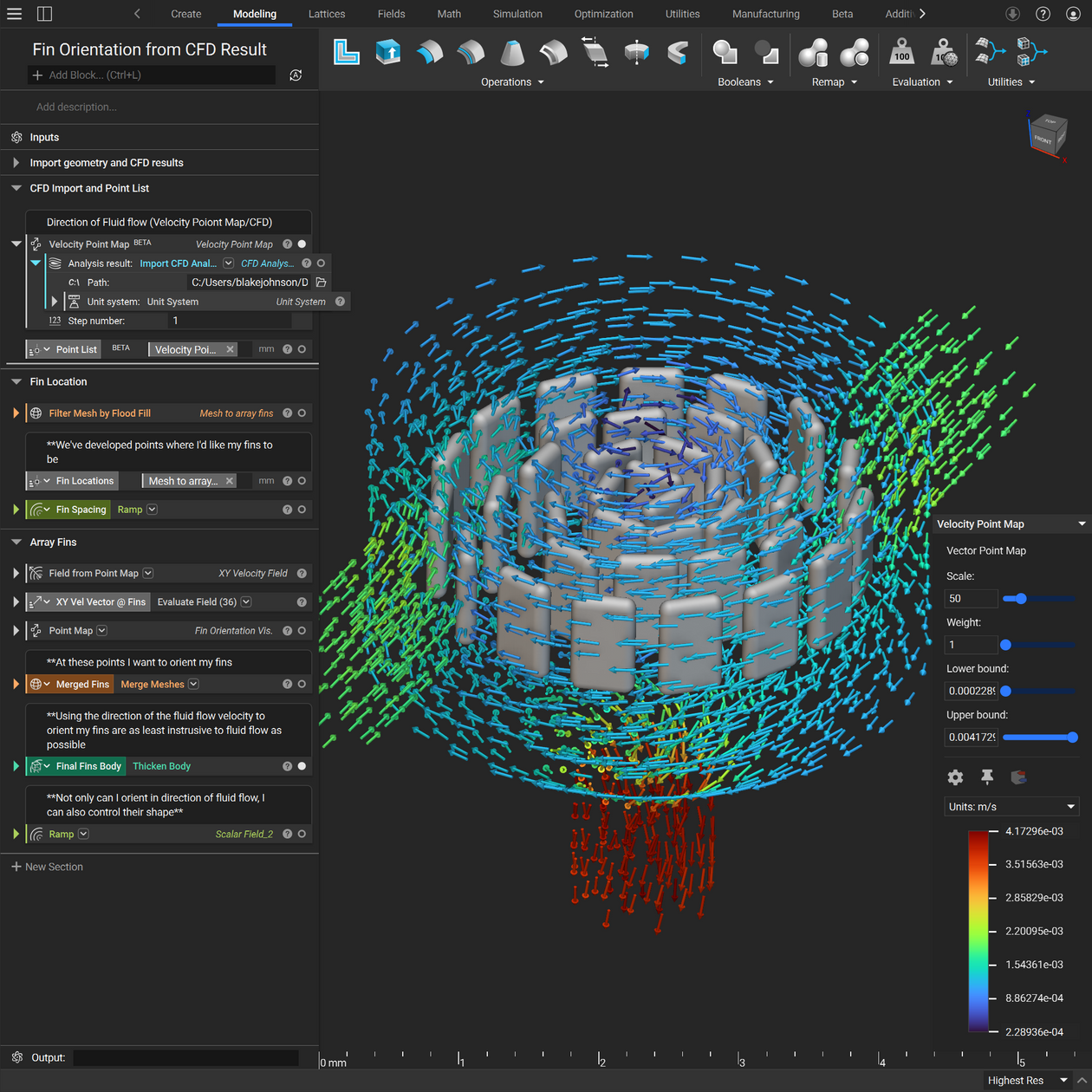
Interoperability
Ensure your tools work together. Your design software should also be able to integrate with other design, analysis, and production software critical to your overall workflow.

Get our thermal management guide.
KW MICRO POWER
KW Micro Power reduced the temperature of a compact turbogenerator by 33% with nTop
KW Micro Power used nTop to redesign the housing of their aerospace-grade, high-power-density, compact turbogenerator for metal additive manufacturing. Using Field Optimization and shelling, they reduced the housing’s weight by 44% and reduced the temperature by 33%.
Thermal management resources for engineers and designers
- VIDEO
5 reasons why you should use nTop to create heat exchangers
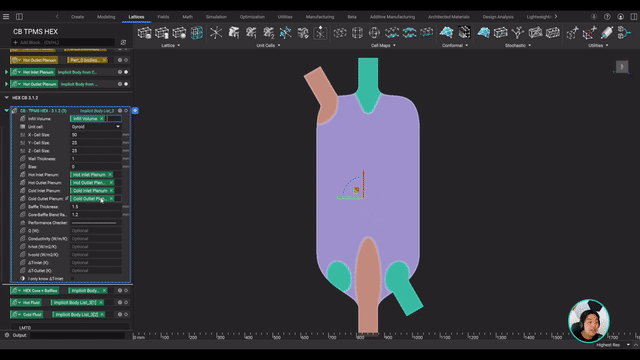
- ARTICLE
Advancing structural performance of aerospace heat exchangers
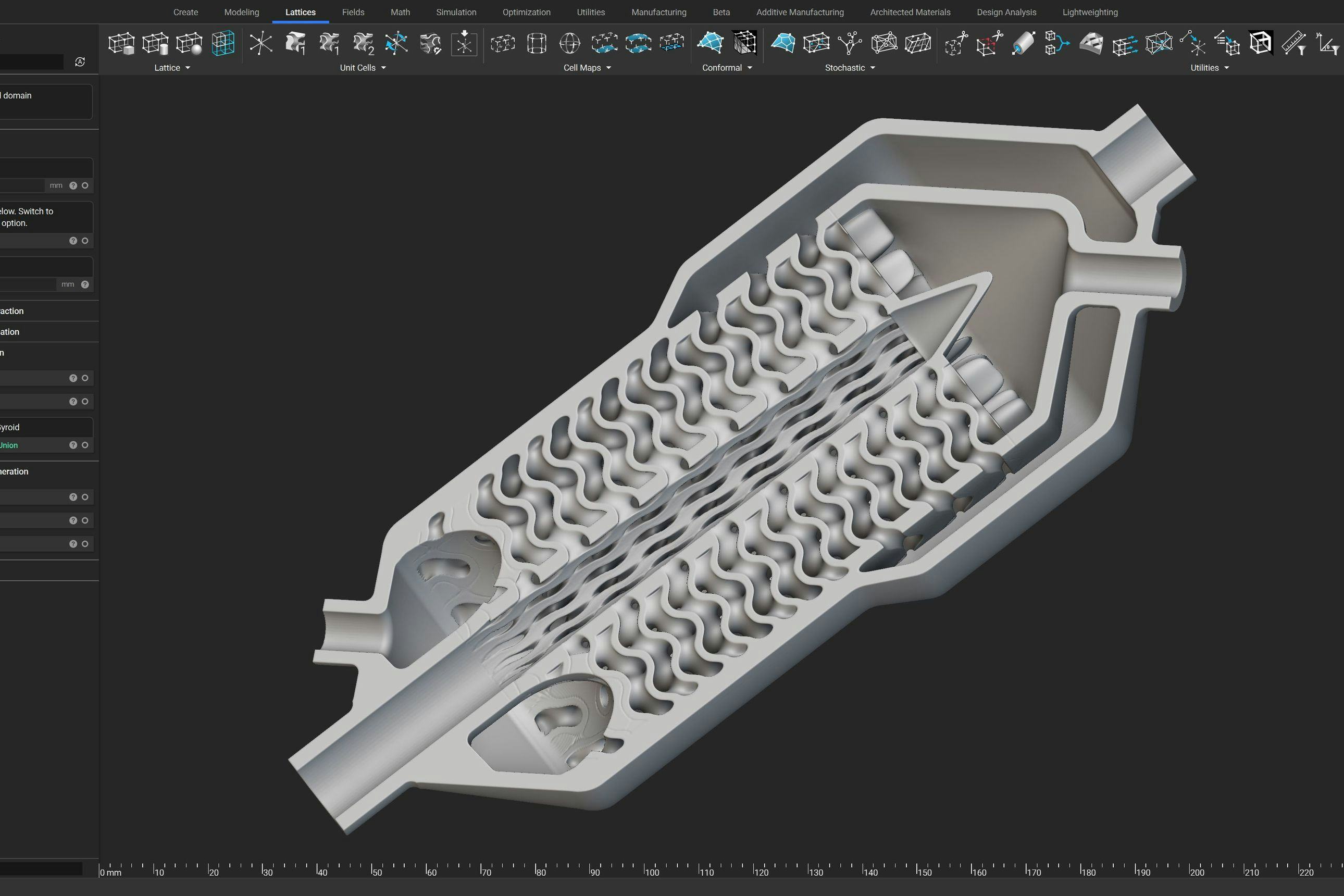
- VIDEO
Plate heat exchanger: Made better with additive manufacturing
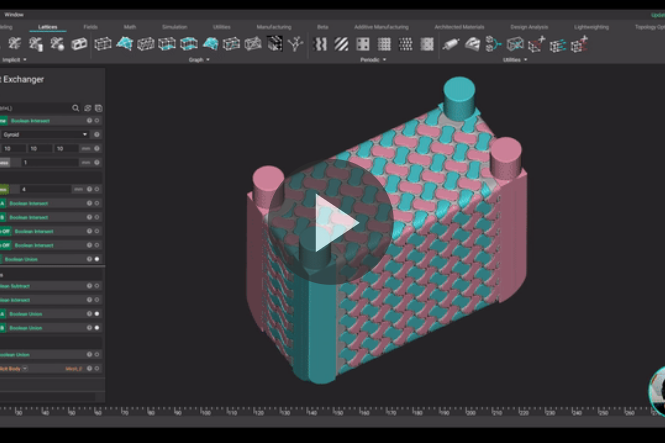
- ARTICLE
4 thermal management trends and additive manufacturing
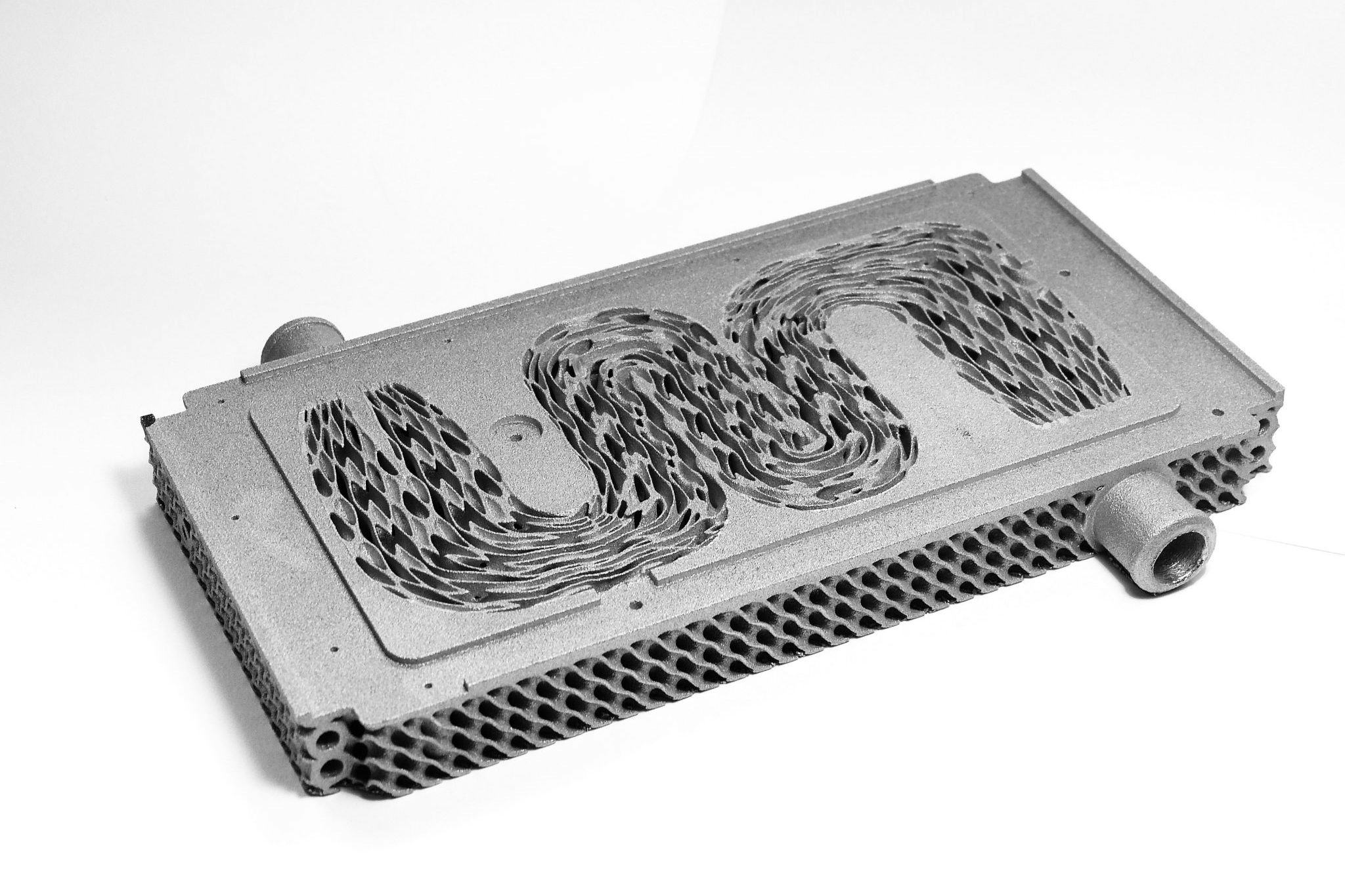
- ARTICLE
Heat exchanger design with additive manufacturing
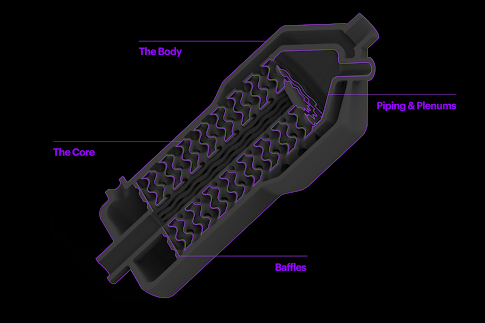
See how nTop thermal management can help you lead your industry.
nTop has the tools you need to get parts with advanced thermal efficiency to market fast.



